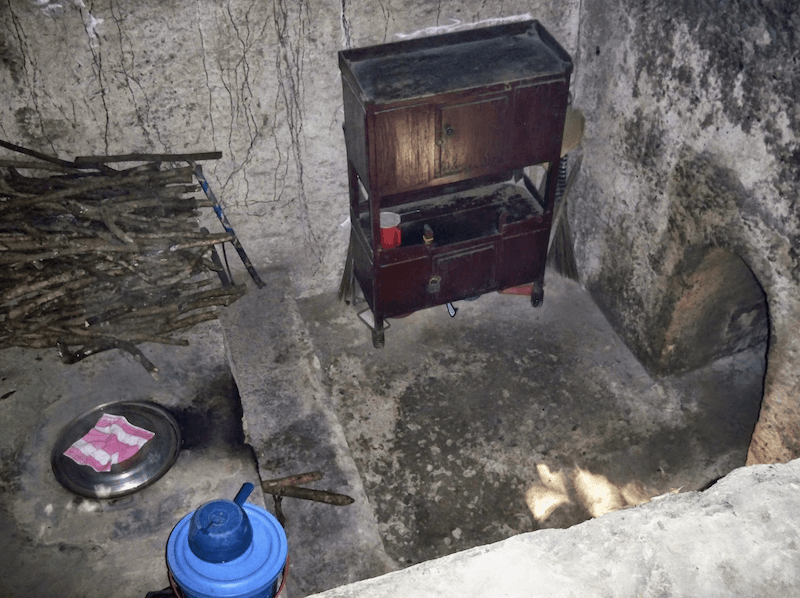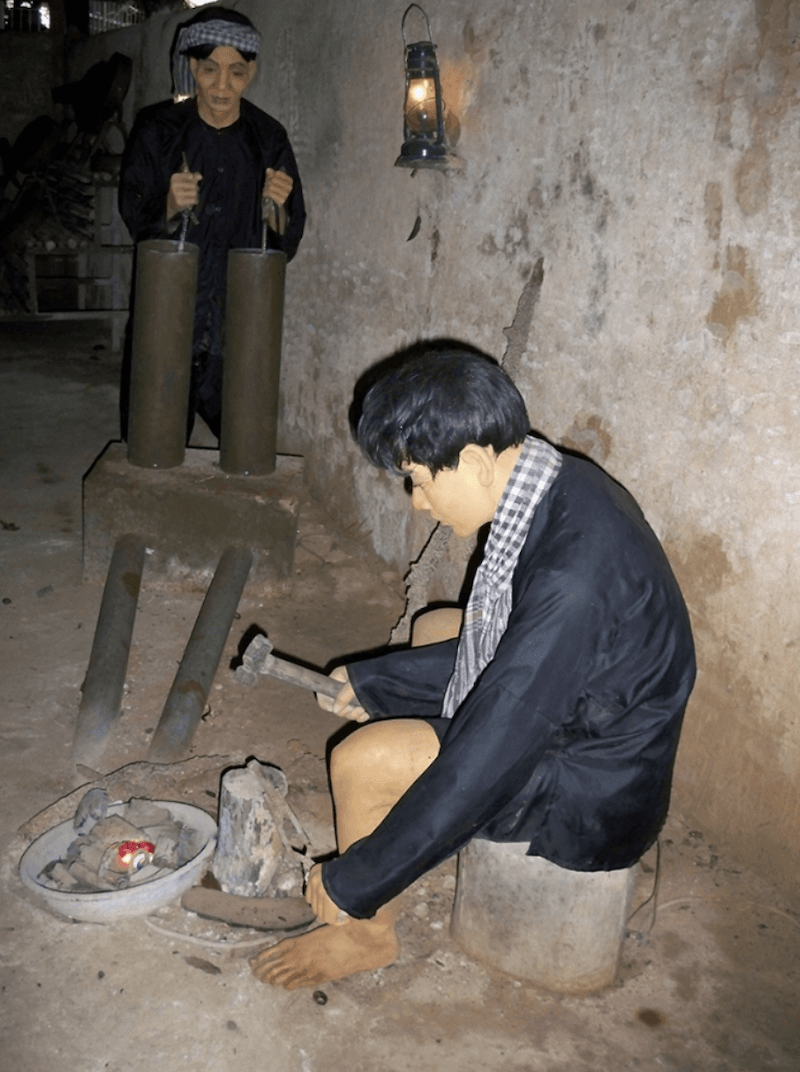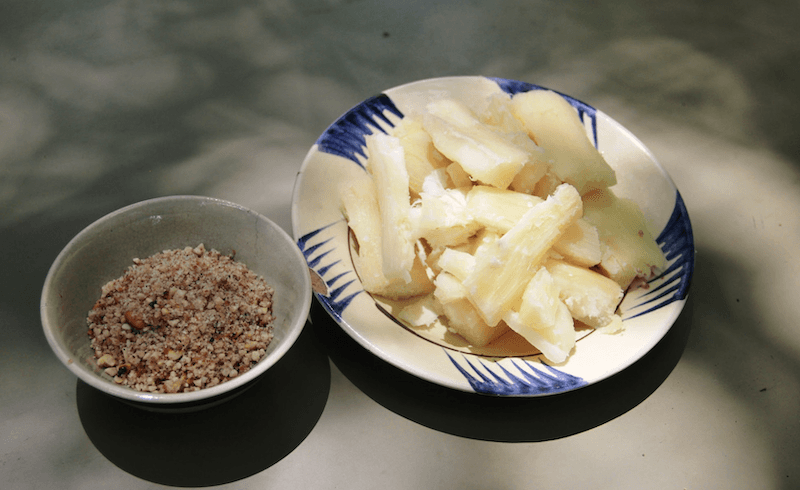The Cu Chi Tunnels stand as one of Vietnam’s most captivating and historically rich destinations. While most visitors marvel at the narrow passageways and clever booby traps, there’s another innovation within these underground labyrinths that played an equally crucial role in survival: the Hoang Cam kitchen. This ingenious cooking system allowed Vietnamese fighters to prepare hot meals without detection, solving one of the most dangerous challenges of underground living during the Vietnam War.
This article explores the remarkable story behind the Hoang Cam kitchen, its clever design, and its vital importance to those who lived and fought from the tunnels. Understanding this innovation provides deeper insights into the extraordinary adaptations that characterized life in the Cu Chi Tunnels.

Contents
- 1 The Challenge of Cooking Underground
- 2 The Hoang Cam Kitchen: An Ingenious Solution
- 3 Cu Chi Tunnels Kitchen: Design and Construction Insights
- 4 How the Smokeless Kitchen Cu Chi Worked
- 5 The Importance of Hoang Cam Kitchen
- 6 Seeing The Hoang Cam Kitchen Cu Chi Today
- 7 FAQs about Hoang Cam Kitchen
- 8 Where is the Hoang Cam kitchen located within the Cu Chi Tunnels?
- 9 Are there demonstrations of the kitchen in action?
- 10 What types of food were cooked in the Hoang Cam kitchen?
- 11 How many Hoang Cam kitchens were there in the Cu Chi Tunnels?
The Challenge of Cooking Underground
Life in the Cu Chi tunnels kitchen presented formidable challenges beyond simply preparing food. The most pressing concern was smoke-cooking fires that produced visible smoke that would rise above the jungle canopy, immediately revealing tunnel locations to enemy aircraft. This deadly giveaway could result in devastating bombing raids and high casualties.
Beyond detection, fire itself posed serious dangers in the confined, oxygen-limited environment of the tunnels. Poor ventilation meant carbon monoxide poisoning was a constant threat, while managing flames in such tight quarters risked burns and tunnel fires. The tunnels’ primarily wooden supports were particularly vulnerable to fire damage, which could lead to catastrophic collapses.
Despite these challenges, providing hot meals was essential for sustaining the fighters and civilians living underground. Proper nourishment was critical for maintaining strength and morale during the harsh conditions of tunnel life.

The Hoang Cam Kitchen: An Ingenious Solution
The smokeless kitchen Cu Chi problem found its solution through the creativity of military chef Hoàng Cầm. After witnessing many casualties from cooking-related detection, Cầm began experimenting with different stove designs.Through persistent experimentation and the construction of numerous kitchen models, he eventually created what became known as the Hoang Cam stove.
Cu Chi Tunnels Kitchen: Design and Construction Insights
The Hoang Cam kitchen design was remarkably sophisticated despite being constructed with simple materials. At its core, the kitchen featured:
- A fire stove dug deep into a hillside or ground;
- Multiple smoke channels extending outward like a squid’s tentacles;
- Chambers covered with tree branches and damp dirt that filtered the smoke;
- A large hole in front covered with a plastic mat or leaves that served dual purposes: storing cooking tools and covering firelight;
- A “smoke cellar” underneath that improved airflow for stronger burning.
Cầm’s determination played a crucial role in the stove’s successful design. He continued to dig and expand the tunnels, testing multiple versions with longer passages and added turns, and through this process of trial and error, he finally arrived at a model that would go on to save countless lives.
The system’s brilliance lay in how it used natural materials and worked with environmental principles. The choice of soil was particularly important-the earth itself acted as both insulator and filter. When properly constructed, the kitchen became virtually undetectable from the air.
How the Smokeless Kitchen Cu Chi Worked
How did the Hoang Cam kitchen work so effectively? The design’s genius was in its smoke management system. When a fire was lit in the stove, the smoke wasn’t allowed to rise vertically as it naturally would. Instead, it was forced to travel horizontally through underground chambers before being gradually released.
The smoke from the stove was dispersed through a system of channels and filtered by the surrounding earth, allowing it to rise gently and resemble natural morning mist. This diffusion effectively prevented the formation of a distinct smoke column, making it nearly impossible for enemy aircraft to detect.
The kitchen was usually built with a double-stove setup, enabling the preparation of rice on one stove while cooking meat or vegetable soup on the other. This practical design played a vital role in efficiently providing meals for large numbers of fighters and civilians living within the tunnel system.
The smoke filtering system was remarkably effective. It allowed the tunnel dwellers to prepare complete meals swiftly and safely, supporting daily survival under constant threat.

The Importance of Hoang Cam Kitchen
The importance of Hoang Cam kitchen extended far beyond simply providing cooked meals. Its impact on the Vietnamese resistance effort was profound and multifaceted.
Most fundamentally, the kitchen ensured consistent nutrition for tunnel inhabitants. This regular access to warm, properly cooked food was essential for maintaining strength and preventing malnutrition-related illnesses.
The kitchen also played an essential role in medical support, as frontline medics used boiling water from the stoves to sterilize their surgical instruments. In the challenging conditions of underground hospitals, this ability to properly sterilize instruments saved countless lives by preventing infections during surgeries and wound treatment.
Perhaps most significantly, the kitchen represented a psychological victory. Vietnamese fighters could maintain some semblance of normal life-including hot meals-despite intense bombing campaigns above. This boosted morale and reinforced their resolve to continue resistance efforts.
The Cu Chi tunnels cooking system became so vital that it was adopted throughout the Vietnamese military. Since its creation, the Hoang Cam stove has become a standard piece of equipment across the Vietnamese military and remains essential in all units to this day. This widespread adoption underscores its pivotal role in Vietnamese military operations beyond just the Cu Chi area.
>> View Details and Pricing: 4 Best Cu Chi Tunnels Tour: Less Crowded & Budget-Friendly
Seeing The Hoang Cam Kitchen Cu Chi Today
Today, seeing the Hoang Cam kitchen Cu Chi is a highlight for many visitors exploring the tunnels. The kitchen demonstrations provide a tangible connection to the ingenuity and resilience that characterized the Vietnamese resistance.
Visitors to the tunnels are typically shown reconstructed kitchens as part of the standard tour experience. These recreations faithfully demonstrate how the multi-chambered smoke filtering system worked. A common stop in the tunnel tour is at the cooking area where guides explain the system’s design and historical significance.
After exploring the tunnels, many visitors get to experience a taste of history firsthand by enjoying a traditional serving of jasmine tea and boiled tapioca root accompanied by a blend of salted peanuts and sugar. This simple meal represents the staple diet that sustained Vietnamese fighters during the war years.
The Ben Duoc tunnel site offers particularly good demonstrations of the kitchen’s functionality. Here, visitors can witness how smoke was cleverly dispersed through hidden ventilation systems, making it nearly invisible from above. The preserved kitchen setup also illustrates how meals were prepared in silence and secrecy, even under constant threat of attack.
For visitors particularly interested in Cu Chi tunnels history, asking guides specific questions about the kitchen can yield fascinating details not covered in standard presentations. Many guides have family connections to the war and can share personal anecdotes about the kitchen’s significance.

FAQs about Hoang Cam Kitchen
Where is the Hoang Cam kitchen located within the Cu Chi Tunnels?
The Hoang Cam kitchen was typically located on the second level of the Cu Chi tunnel system, approximately 6 meters underground. This middle level houses living quarters and cooking facilities, while deeper levels were reserved for meeting rooms and medical stations. Today, reconstructed examples of the Hoang Cam kitchen can be seen at both the Ben Dinh and Ben Duoc tunnel sites, with particularly good demonstrations at Ben Duoc where visitors can see how the smoke dispersion system worked.
Are there demonstrations of the kitchen in action?
Yes, most Cu Chi tunnels tour packages include demonstrations of how the Hoang Cam kitchen operated. While the demonstrations typically don’t involve actually lighting fires (for safety reasons), guides carefully explain the mechanics of the smoke filtration system and show how the kitchen’s design concealed both smoke and firelight. At the end of many tours, visitors are served traditional tapioca and tea at a recreation of the kitchen, giving them a taste of the tunnel dwellers’ staple diet.
What types of food were cooked in the Hoang Cam kitchen?
The primary foods prepared in the Hoang Cam kitchen were rice, simple soups, and boiled tapioca (cassava root). Tapioca was particularly important as it could be grown underground, hidden from aerial observation, and provided substantial calories despite its simple preparation. When available, vegetable and meat soups would complement the starchy staples. The kitchen’s double-stove design allowed for cooking rice on one side and soup on the other simultaneously.
How many Hoang Cam kitchens were there in the Cu Chi Tunnels?
While exact numbers aren’t documented, Hoang Cam kitchens were established throughout the extensive Cu Chi tunnel system, typically positioned to serve different sections of the underground community. The kitchen design became so successful that it spread beyond Cu Chi to military units throughout Vietnam. The design was readily replicable, allowing new kitchens to be constructed whenever and wherever needed, making it an adaptable solution throughout the war.
The Vietnam war ingenuity displayed in innovations like the Hoang Cam kitchen demonstrates the remarkable human capacity for problem-solving under the most challenging circumstances. This simple yet brilliant cooking system played a crucial role in Cu Chi tunnels survival, allowing residents to maintain their health and fighting capacity despite intense bombing campaigns.
Plan your visit to the Cu Chi Tunnels to see the Hoang Cam kitchen and experience the ingenuity of wartime survival. By booking a tour with Joy Journeys, you’ll benefit from knowledgeable guides who can provide detailed explanations of the kitchen’s historical significance and operation. Our small-group tours to the less-crowded Ben Duoc site offer a more authentic experience where you can truly appreciate innovations like the Hoang Cam kitchen that made survival possible in this remarkable underground world.
- Visit joyjourneys.com.vn to explore tour options
- Call our friendly team at +84 (0) 868.17.66.79
- Or send your inquiry to: inquiry@joyjourneys.com.vn
Book now for an unforgettable historical adventure just outside Ho Chi Minh City!



Related Posts
Saigon’s “Flower Market Replica”: Where To Find Them
Ho Chi Minh City’s floral charm is not limited to its bustling wholesale markets. Imagine wandering through a place where vibrant petals, fragrant blooms, and the spirit of traditional Vietnamese markets come alive—without the overwhelming crowds. A flower market replica captures that magic, blending the beauty of fresh flowers with the charm of a curated, […]
Is it Safe to Travel to Vietnam Right Now? A Complete 2025 Guide
Vietnam has emerged as one of Southeast Asia’s most captivating destinations, drawing millions of visitors annually with its rich culture, stunning landscapes, and incredible cuisine. However, many travelers still ask: Is it safe to travel to Vietnam right now? This comprehensive guide provides you with everything you need to know about Vietnam travel safety in […]
Ho Chi Minh Cu Chi Tunnels Tour: The Ultimate Guide
The Cu Chi Tunnels stand as one of Vietnam’s most remarkable historical sites, offering visitors a profound glimpse into the ingenuity and resilience displayed during the Vietnam War. For travelers, a Ho Chi Minh Cu Chi tunnels tour represents an essential experience that combines education, adventure, and deep cultural understanding. This comprehensive guide will help […]